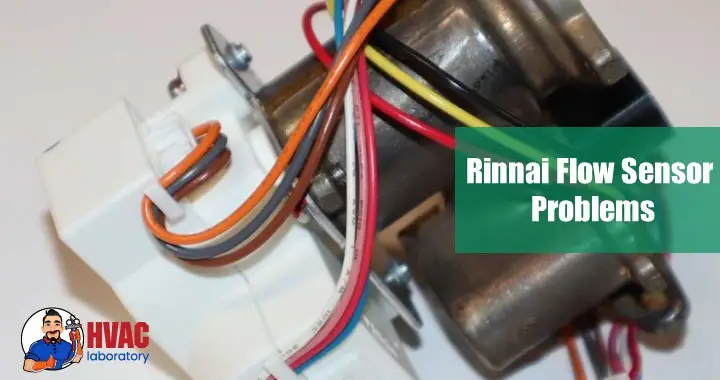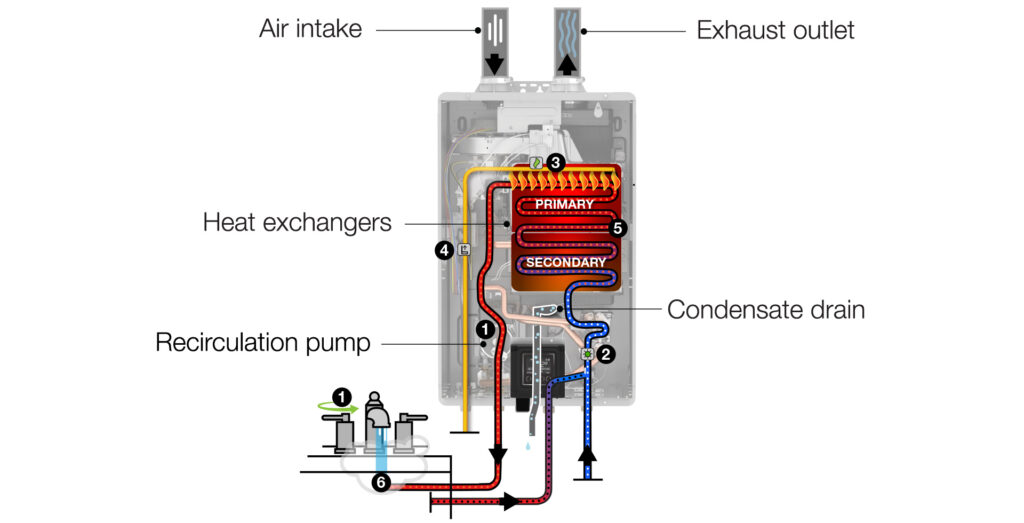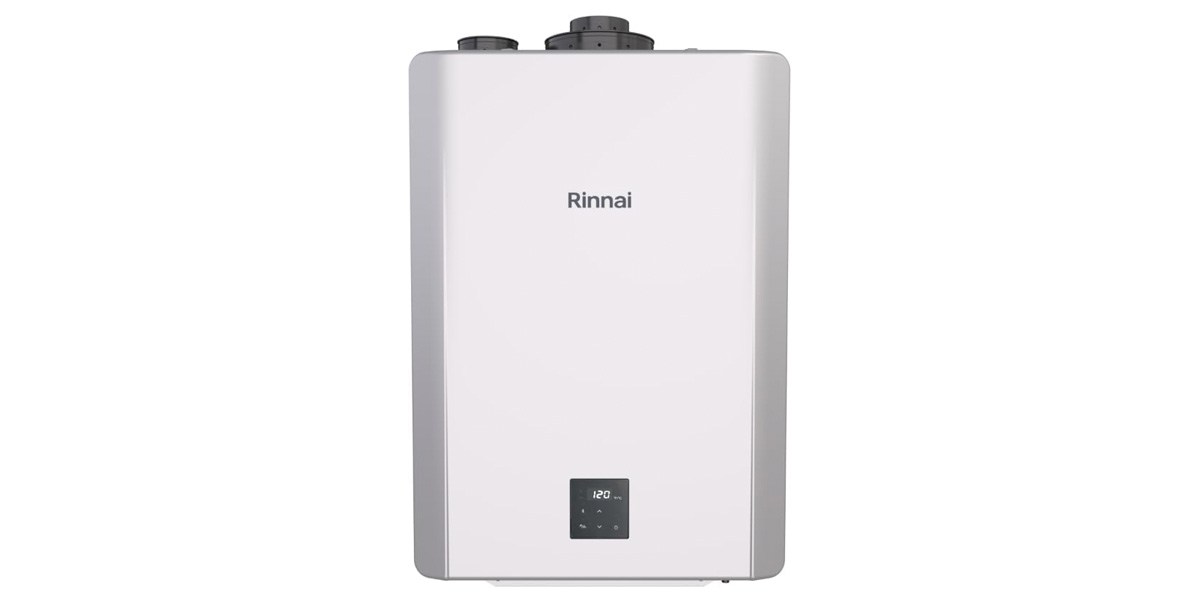Rinnai Tankless Water Heater Flow Sensor

The unsung hero of many Rinnai tankless water heaters is the flow sensor. While it might seem like a small component, its role is crucial in ensuring consistent hot water delivery and efficient operation. Understanding the flow sensor – what it does, how it works, and common problems – is essential for homeowners, HVAC technicians, and property managers alike.
What is a Flow Sensor?
In essence, the flow sensor is a device that measures the rate at which water is moving through the tankless water heater. It acts as the "eyes" of the system, constantly monitoring water flow. This information is then relayed to the heater's control board, which uses it to regulate the gas burner and maintain the desired water temperature.
Think of it like the gas pedal in your car. The flow sensor tells the heater how much "gas" (heat) is needed to achieve the target temperature. Without it, the heater wouldn't know when to fire up the burner or how intensely to heat the water.
How Does a Rinnai Flow Sensor Work?
Rinnai typically utilizes a turbine-style flow sensor. This design incorporates a small turbine or impeller that rotates as water flows through the unit. The speed of the turbine's rotation is directly proportional to the water flow rate. A magnetic pickup, usually a hall-effect sensor, detects the rotation of the turbine and sends a corresponding electrical signal to the control board. The control board interprets this signal to determine the flow rate in gallons per minute (GPM) or liters per minute (LPM).
Other types of flow sensors exist, but turbine sensors are common in Rinnai units due to their reliability and accuracy. The accuracy of the flow sensor is critical for optimal performance. If the sensor malfunctions and sends incorrect readings, the heater may not operate properly.
Why is the Flow Sensor Important?
The flow sensor plays several key roles in the operation of a Rinnai tankless water heater:
- Activation: The flow sensor is the primary trigger for the heater to turn on. When you open a hot water tap, the sensor detects the water flow and signals the control board to ignite the burner.
- Temperature Regulation: By continuously monitoring the flow rate, the control board can adjust the burner output to maintain a consistent water temperature. This prevents scalding or lukewarm water, ensuring a comfortable user experience.
- Efficiency: Accurate flow sensing allows the heater to modulate its burner output, only using the amount of energy needed to heat the water. This leads to improved energy efficiency compared to traditional tank-style water heaters that constantly heat a large volume of water.
- Safety: The flow sensor also acts as a safety device. If the water flow is insufficient, the heater may shut down to prevent overheating and potential damage.
Without a functioning flow sensor, the heater will likely fail to ignite, deliver inconsistent temperatures, or operate inefficiently.
Common Problems with Rinnai Flow Sensors
While Rinnai tankless water heaters are generally reliable, the flow sensor is a common point of failure. Here are some typical problems:
- Scale Buildup: Hard water contains minerals that can deposit on the turbine, slowing its rotation and affecting the accuracy of the sensor. Over time, the buildup can completely seize the turbine, preventing it from rotating.
- Debris Accumulation: Sediment, rust, or other debris in the water can also clog the flow sensor, hindering its performance. This is especially common in older plumbing systems.
- Electrical Malfunctions: The sensor itself can fail due to electrical problems, such as a short circuit or a broken connection.
- Mechanical Wear and Tear: Over time, the turbine bearings can wear out, causing the turbine to rotate erratically or seize.
These issues can manifest in several ways, including:
- No hot water: The heater fails to ignite when a hot water tap is opened.
- Inconsistent water temperature: The water temperature fluctuates between hot and cold.
- Error codes: The heater displays an error code related to the flow sensor. Common codes include those related to flow rate issues. Check your Rinnai owner’s manual for specific error code meanings.
- Low water flow: Even with the hot water tap fully open, the water flow is weak.
Troubleshooting and Repair
If you suspect a problem with your Rinnai flow sensor, here are some troubleshooting steps:
- Check for Error Codes: Consult your owner's manual to identify any error codes related to the flow sensor. This can provide valuable clues about the nature of the problem.
- Inspect the Flow Sensor: If you are comfortable working with plumbing and electrical components, you can visually inspect the flow sensor. Look for signs of scale buildup, debris accumulation, or damage. Remember to disconnect the power and water supply before inspecting the sensor.
- Clean the Flow Sensor: If scale buildup or debris is present, carefully clean the sensor with a mild descaling solution or a soft brush. Be careful not to damage the turbine.
- Test the Flow Sensor: Using a multimeter, you can test the electrical continuity of the flow sensor. Consult the Rinnai service manual for the specific testing procedure.
- Replace the Flow Sensor: If the sensor is damaged or cannot be repaired, it will need to be replaced. Consult a qualified HVAC technician for assistance.
Important Note: Working with gas appliances can be dangerous. If you are not comfortable performing repairs, it is best to consult a qualified HVAC technician. Attempting to repair the heater yourself could void the warranty and potentially lead to serious injury.
Prevention and Maintenance
To prevent flow sensor problems, consider the following maintenance tips:
- Install a Water Softener: If you have hard water, installing a water softener can significantly reduce scale buildup in the water heater and other plumbing fixtures.
- Flush the Water Heater Regularly: Flushing the water heater annually can help remove sediment and debris that can clog the flow sensor. Follow the manufacturer's instructions for flushing.
- Install a Water Filter: A whole-house water filter can remove sediment and other contaminants from the water supply, protecting the flow sensor and other components.
- Regular Inspections: Schedule regular inspections with a qualified HVAC technician to identify and address potential problems before they become major issues.
Cost Considerations
The cost of replacing a Rinnai flow sensor can vary depending on the model and the location. Typically, the sensor itself costs between $50 and $150. Labor costs can add another $100 to $300, depending on the technician's hourly rate and the complexity of the job. Consider the long-term cost savings associated with regular maintenance to avoid premature failure and expensive repairs.
Conclusion
The Rinnai tankless water heater flow sensor is a vital component that ensures consistent hot water delivery, efficient operation, and safe performance. Understanding how it works and common problems can help homeowners, HVAC technicians, and property managers troubleshoot issues and prevent costly repairs. By implementing proper maintenance practices and addressing problems promptly, you can extend the lifespan of your Rinnai tankless water heater and enjoy reliable hot water for years to come.
Remember that while DIY troubleshooting is possible, consulting with a qualified HVAC technician is always recommended, especially when dealing with gas appliances. A professional can accurately diagnose the problem, perform repairs safely, and ensure that your Rinnai tankless water heater is operating at peak performance.










